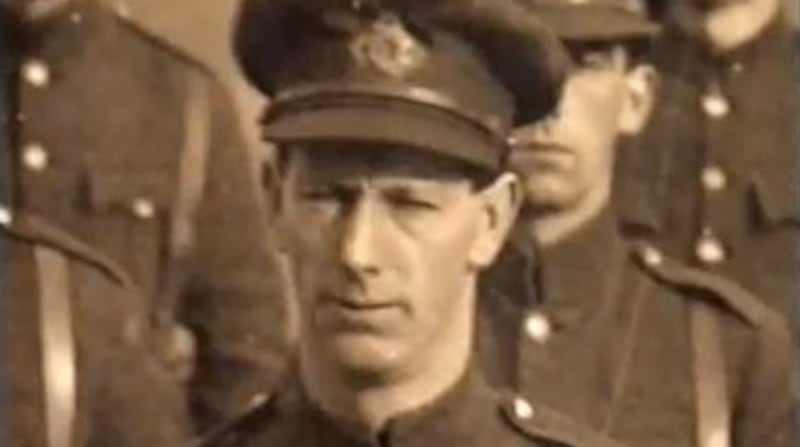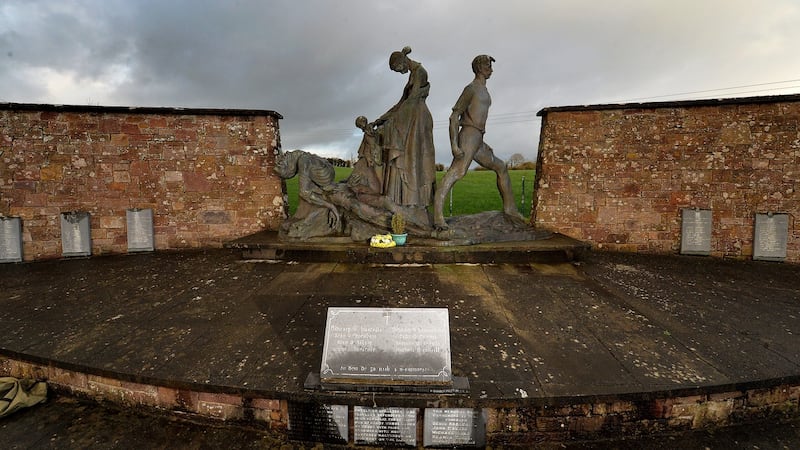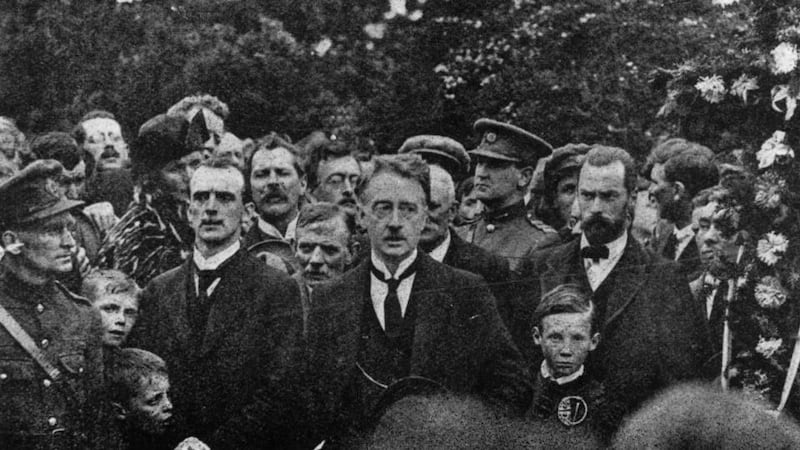The decision by a number of National Army officers to execute anti-Treaty IRA prisoners in Kerry in both official executions and extrajudicial killings such as Ballyseedy, where prisoners were tied to mines and blown up, served only to prolong the Civil War in the county, a leading historian has argued.
Owen O’Shea, author of No Middle Path – The Civil War in Kerry, said the ruthless approach taken by Maj Gen Paddy O’Daly of the National Army from early 1923 served only to continue the conflict in the county as anti-Treaty IRA figures refused to give up their arms in the face of such a policy.
Mr O’Shea said it was clear the appointment of Maj Gen O’Daly on January 2nd, 1923, in succession to Maj Gen WR English-Murphy, marked a notable escalation in the efforts by the National Army and the Free State government to prosecute the war against the anti-Treaty IRA in Kerry.
“WR English-Murphy, who was in command in Kerry until the end of 1922, was actually resisting the policy of executions. There were four men to be executed – Tom Devane, Con Casey, Matt Moroney and Dermot O’Connor – but English-Murphy resisted plans to carry out the executions.
Actor Armie Hammer resurfaces as host of celebrity podcast
Heart-stopping Halloween terror: 13 of cinema’s greatest jump scares
Doctor Odyssey’s core message: just imagine Pacey from Dawson’s Creek holding you tight and saying, ‘Shhh, it’s okay’
Conor Niland’s The Racket nominated for William Hill Sports Book of the Year
“But when Paddy O’Daly assumed full control of the National Army in the county on January 2nd, 1923, he made clear his intention of keeping up the military campaign and he immediately ordered the execution of another four men: James Daly, John Clifford, James Hanlon and Michael Brosnan.
The minute that O’Daly was appointed, he began carrying out executions and politically there was complete endorsement for his policy
— Owen O'Shea
“English-Murphy was much more attuned to the consequences of executions and he had argued that the shooting of those found guilty of offences had already had a salutary effect and suggested only those caught firing or in ambush positions should be executed.

“But the minute that O’Daly was appointed, he began carrying out executions and politically there was complete endorsement for his policy. In February 1923, WT Cosgrave said the government would not hesitate if they had to, ‘to exterminate 10,000 republicans’ to save the Free State.”
O’Daly’s escalation of the campaign reached its peak 100 years ago this month when, following the killing of five National Army soldiers in an anti-Treaty IRA trap mine at Knocknagoshel on March 6th, Free State soldiers retaliated by tying 17 anti-Treaty IRA prisoners to mines and blowing them up.
Intense pressure
Eight prisoners were blown up and killed at Ballyseedy, where Stephen Fuller survived; four were killed at Countess Bridge near Killarney where Tadhg Coffey survived; and five were killed at Bahaghs near Cahersiveen between March 6th and March 12th, 1923, all while in the custody of their captors.
Speaking during a panel discussion at a centenary conference last Saturday in Tralee on the Civil War in Kerry entitled ”History, Memory and Legacy”, Mr O’Shea acknowledged that O’Daly and the other senior officers of the Kerry Command were under intense pressure to bring the Civil War in Kerry to an end.

“Undoubtedly there was huge frustration within the ranks of the Free State army and within the government about why the war was still waging in Kerry, and without justifying what O’Daly and his senior officers did, they were under enormous pressure to bring the war to a conclusion,” he said.
“I’m sure they were getting messages from their political masters in Dublin, asking why war was still raging and I think that frustration manifested itself in the executions in Ballyseedy, Countess Bridge and Bahaghs, which probably did more to scar the county than anything else in the Civil War.”
[ Descendants of two Kerry Civil War atrocities to be invited to commemorationOpens in new window ]
“I won’t say the executions and killings emboldened the IRA, because by that point the IRA militarily weren’t going to win the war in Kerry, but at the same time it did mean that that they weren’t going to lay down arms given what they saw was happening to those who were captured.
“That policy had sanction from on high and there was no opposition by Cosgrave or Mulcahy [Richard Mulcahy, the minister for defence] to what O’Daly was doing… they turned a blind eye and when challenged in the Dáil by Labour leader Tom Johnson, Mulcahy said it was ‘inconceivable that his men in Kerry would be capable of such a thing’.
As a historian, I’ve tried to look at O’Daly in the round and see if he had any redeeming features, but to be honest, I’ve struggled to find any
— Owen O'Shea
“That statement to the Dáil by Mulcahy was a public green light to O’Daly to bring the war to an end by whatever means as he saw fit, and as we know, neither O’Daly nor any of his officers in the Kerry Command were ever disciplined for what happened in Kerry during March and April.

“O’Daly and Mulcahy and Cosgrave may have assumed that these executions and extrajudicial killings would terrify the people and popular support for the IRA would wane, but I would argue O’Daly’s approach prolonged the war for several months longer than it might have lasted.
‘Psychopathic tendencies’
“O’Daly is reported to have said that no one asked him to bring kid gloves when he was coming to Kerry so he didn’t and that’s an acknowledgment by him that he was operating with approval from his political and military masters for his tough approach, so he wasn’t operating in a vacuum.
“As a historian, I’ve tried to look at O’Daly in the round and see if he had any redeeming features, but to be honest, I’ve struggled to find any – I think he had sadistic and psychopathic tendencies, as had some of the people around him in the Kerry Command like David Nelligan and Ned Breslin.
“The torture of prisoners and the way they treated the remains of the deceased from Ballyseedy by playing jazz music at the gates of Ballymullen when they were handing over the bodies to their family all points to a different psychological profile.
“I can understand the pressures O’Daly was under to bring the war to an end, but you cannot but conclude that some of what he and his men did in Kerry borders on sadism and he and others remain synonymous with the worst brutalities of the conflict 100 years later.”
All those who were killed at Knocknagoshel and Ballyseedy will be remembered this weekend when a series of commemorations take place in Kerry to mark the 100th anniversary of the killings.





